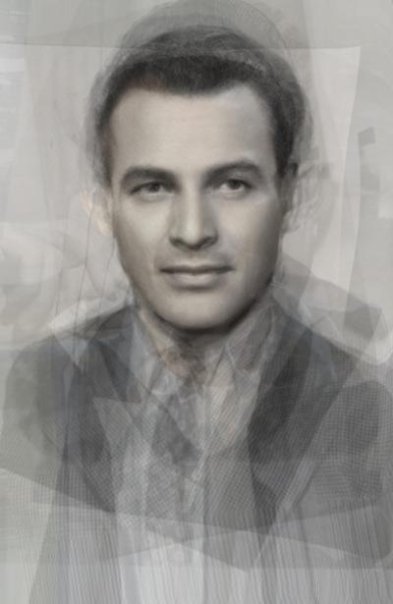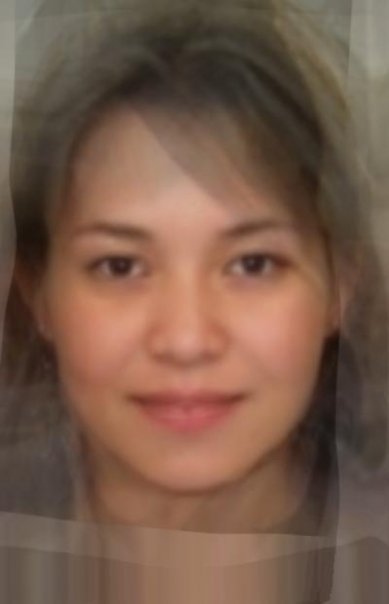You are currently browsing the category archive for the ‘Editor’s Comment’ category.
There is a lot in the news today that I do not have a particular opinion but I wanted to share:
–Genetic Nondiscrimination Bill Stalled in Senate – I have long felt that human genetic engineering is inevitable and the wealthy elites will augment themselves and their offspring regardless of the fact it may be illegal in the West by going to a nation where it is not. East Asia seems to be the likely location. Long before that will happen, genome sequencing will become decrease in expense to the point that knowledge of one’s genetic defects, can be known prenatally. If no bill is passed, imagine what insurance companies will do with the information that you might be 50% more likely to die of a stroke, or 40% more likely to get develop diabetes. I would expect to see more legislation like this in my lifetime, a lot more.
–Denial Makes the World Go Round – LOL, the entire time I read this article I kept thinking of the “intelligent design folks”. I was also thinking that men tend to be highly in denial of their own flaws, whereas women are often in denial of the flaws of those around them. This is something men should be thankful for everyday. 🙂 The downside is that this seems to be the strongest with “in-group” people, which makes it more likely that people will show double standards with those they consider their “peers”.
–U.N. to Say It Overstated H.I.V. Cases by Millions – Just last week I was talking about how another international organization totally miscalculated China and India’s economic size. If you want my opinion on the HIV issue, well this Nigerian epigone said it best.
–Are Scientists Playing God? It Depends on Your Religion – This is very much related to what I was saying on the Genetic Discrimination Bill.
–Germany looks to Asia, at China’s expense – I’m not really sure I “get this” as many of the countries with “good human rights” in SE Asia are not the ones who are directly competing in the same industries as China is dominant. So I am wondering how much of this is a play to the German public by competing political factions. In any case, “I’m gonna tell you like a n1GG1 told me, Cash Rules Everything Around Me (CREAM)”. That is pretty much where my head is at one these issues, economics is going to trump politics, although moralistic grandstanding does make for a nice show for the “mob”.
Picture is taken from Michael Burton’s site:
The sign in Chinese says (I think):
“Taiwanren lian, Zhongguo Bizuai!”
“Taiwanese unite, China shut the hell up!”
He should have said Bi shang ni de guo zuai (something like Shut your filthy dog mouth) that would have been more offensive..but then again everyone in the world knows the “F” word.
 I have often often seen on the web, especially on minority sites (particularly black American) comments accusing East Asians of wanting to be white because they favor light skin in their women or eyes with double lids.
I have often often seen on the web, especially on minority sites (particularly black American) comments accusing East Asians of wanting to be white because they favor light skin in their women or eyes with double lids.
The latest example is this:
I saw this today posted on Booker Rising, a site I regularly post on, owned by a person named Shay, who I admire, but sometimes she lets some of her personal hangups eat away at her ability to reason (which is usually vast). My response to her comments and the original writer of the post, John Hope Bryant:
I lived in Shanghai, China in 1999, and also in Tokyo, Japan from 2001-2002. While in Japan I managed to visit Taiwan and South Korea too.
South Koreans, like Japanese, and Chinese have had a white skin fetish for their women that preexisted any Western European contact.
You can see this reflected in Tang Dynasty China which was roughly the same time as the later part of the Western Roman Empire. There were envoys that were exchanged, but for most Chinese had never seen a European.
http://library.thinkquest.org/C005742/tang%20-%20zhou%20fang%201.jpg
There are some East Asian women naturally as pale as in the link (my sister in law is, the younger one), but most are not. Typical make up was used and in later centuries, Geisha, in Japan, also pained their faces white, as it was considered beautiful.
Geisha go back a long time before any Dutch or Portuguese contact with Japan, which would be the initial sustained European contact in the mid-16th century:
http://www.danhagerman.com/images/Pseudo%20Geisha.jpg
This is true in Korea as well:
http://www.askasia.org/images/teachers/display/670.jpg
The explanation I have heard is that the upper classes did not do physical labor and stayed in doors so they were lighter, many Asians are naturally pale but unlike many Europeans they do not burn easily, but tan darker (yellowish-brown), so being dark became a sign of being low class.
This goes back to at least the time of Confucius in China (over 2,000 years, around the 6th century BCE)…maybe longer, but that is based on the art I have seen. It is likely more ancient.
So sorry, no it is not about white people.
As far as “big eyes”…
Read the rest of this entry »
Found an interesting article on the Gene Expression ( Confucianism & China), by Razib. Not normally a big fan, but he is spot on here.
He did leave out Japan though, much of their “early modern” culture was in part a fusion of traditional Shintoism and Chan (Zen) Buddhism from China and a Chinese government structure (based on Confucianism). Although Confucianism is not as strong an element in Japan it is a critical thread to modern Japanese cultural tradition. Japan like its East Asian neighbors (Chinese and Koreans) has a small Christian population, in fact the smallest, probably less than 1% of the population, despite Europeans proselytising in Japan as early as the 1500’s. I would go a little further and say that there is something intrinsic in East Asian cultures (not SEAsian) that make them very resistant to monotheistic Abrahamic religions (Judiaism, Christianity, and Islam).

The Economist has an article up about the revival of Confucianism in China. There has been a lot of talk about Christianity & Christianesque cults in China over the past 15 years (see Jesus in Beijing). It seems plausible that ~5% of the citizens of the People’s Republic of China are now Christian or Christianesque, and this number is likely to go somewhat higher. But, it is important to remember that the number of Christians in Taiwan has long been stabilized at 5%, and in the 5-10% range in Hong Kong, both jurisdictions where Christianity was somewhat favored by the powers that be for decades. Meanwhile, South Korean Christianity seems to have plateaued at about 25% of the population after decades of rapid growth. The point is that one would probably bet against China becoming a Christian nation anytime soon, and without that Christianity being able to assume center stage as a unifying ideology seems unlikely.1
So Confucianism is an interesting alternative. Below I talked about the fact that even in a post-Christian continent the basic raw material of Christian belief is still abundant amongst the population which remains as a reservoir of older practices and outlooks. Is the same true of China? Though State Confucianism fell in the first decades of the 20th century as the organizing principle of the Chinese polity, the the idea of Confucianism as central to the Han Chinese identity did not really suffer major body blows until the Communist take over of the mid-20th century. While most Europeans remember a time when Christianity was ascendant as the central motivating belief structure of their culture, and some European nations still have Christianity embedded in their organizing political documents, the same is not true of Confucianism. Rather, Confucian ideas floated outside of the power structure and passed from generation to generation informally. Outside of China (e.g., Taiwan) Confucianism did not go through the gauntlet of the Cultural Revolution, so even if there was not within China some memory of this ideology it could conceivably be re-planted from without.
But what exactly is “Confucianism”? The “original” Confucianism, as elaborated by Confucius himself and preserved in The Analects, was basically an elaboration of the ideals of Zhou Dynasty China. Its core, family values and traditionalism, are not particular controversial. Later on thinkers such as Mencius and Xun Zi added layers of philosophy on top of the original system, and the rise of Buddhism, and the counter reaction religious Daoism, gave birth to synthetic ideas of Neo-Confucianism, exposited effectively by intellectuals such as Zhu Xi. Some have also asserted that State Confucianism, as promulgated first by the Han Dynasty, had more in common substantively with Legalism (though Legalism was strongly influenced by one of the three fathers of Confucianism, Xun Xi), the bete noire of early Confucianism, with only stylistic flourishes being carried over from the original ideas of Confucius. Whatever the exact truth is, I think the critical overall point is that it is less important what Confucianism is, then that it served as a common anchor for the Chinese bureaucratic elite. Until recently the common anchor for the modern Chinese mandarinate were the texts of Marx & Engels, the policies of Lenin and later the thoughts of Mao (the Little Red Book was actually modeled on the Christian pocket pamphlets ubiquitous in the China of Mao’s youth). For obvious reasons that is now less appealing, and attempting to reconstruct them to be congenial to nationalist capitalism is a difficult project. Confucianism is also in some ways an odd fit, especially with its historical contempt for the merchant classes and non-primary producers in general, but at least most Chinese can accede to the fundamental value of Confucian ideas and perhaps make them relevant to the modern age.2 Just as the Constitution of the United States serves as a unifying document for the American nation, so a reconstructed Confucianism might serve as the hub around which the various spokes of Han Chinese culture revolve.
1 – I use the word “Christianesque” because many of the new Christian inspired “cults” are really pretty strange, and mix a lot of folk beliefs within Christian orthodoxy. Since so much of the growth is outside conventional channels and uncoordinated from above it tends to span a lot of “idea space.”
2 – One could observe that the synthesis of Christianity and capitalism which is the norm in much of modern Western culture is also rather unexpected.

I really enjoyed the article below. There is definitely another side to the “Chinese Miracle” as the income gap between the eastern seaboard cities and the rural countryside increase. Most Chinese live still do not live in cities, as much as 60% (according to the Chinese government, and I am guessing that is optimistic) live in rural areas. To give CCP its credit, it has lifted more people out of poverty than ever before in human history, however the growing gap between the cities and the rural areas, lack of legal worker mobility, lack of representation, and corruption are causing ethnic unrest. The CCP is very sensitive to this because they know their own history. The communist revolution was started in the city but won in the countryside. Most Chinese revolutions went this way as well. They also know that China has never had a revolution in good economic times, so they are desperately trying to suppress these uprisings and news of them as long as possible to keep discontent from spreading and becoming organized. In the meantime they are desperately trying to stop corruption (at least at the local level), build up infrastructure, and attract industry.
I wonder if China can do this fast enough to counter discontent with CCP rule. I also how this plays in with the gender gap. You have all these young men in China who are poor in rural areas and have no chance of getting married, because they just are not competitive economically for the few females there are. Typically societies with such gender gaps are prone to all types of social ills, this fact can not be helping the CCP’s situation.
China’s Social Unrest: The Story Behind the Stories
Albert Keidel
Senior Associate, Carnegie Endowment for International Peace
Large-scale public disturbances have been on the rise in China for more than a decade. Media reports describe violence, injuries, and even deaths on both sides, linked to brick-throwing, tear gas, Molotov cocktails, rockets, bullets, beatings, burned vehicles, stabbings, and standoffs between hundreds of police and thousands of protestors. Claims by demonstrators and police are often at odds, but all agree that events can turn deadly and that serious injury and loss of property are common. Issues include labor grievances, taxation, land confiscation, and pollution. Corruption worsens common injustices and further inflames citizen anger. Industrial China no longer pretends to be a workers’ paradise. In southern China in 2005, 100 shoe factory workers smashed vehicles, threw rocks, and injured three police over unpaid wages. Thousands of workers at an electrical factory struck for four days over working conditions and the right to unionize. In western China, 2,000 laid-off workers barricaded a street and demanded severance pay. In 2004, more than a thousand workers in two south China factories struck for higher pay and one rest day per week. Elsewhere, workers took their bosses hostage over unpaid back wages.
Two years earlier, in 2002, 80,000 retired workers in northeast China protested unpaid pensions. Until recently, taxes, fees, and tolls caused widespread unrest. In 2004, 30,000 people confronted hundreds of police and paramilitary units in a riot over bridge tolls. In 1999,10,000 peasants in central China demonstrated against taxes and fees. Police attacked with tear gas and batons. In one compilation for five provinces in 1997, half a million peasants took part in violent demonstrations in over 300 townships, with 250 injuries and fourteen deaths, including five police. Poorly compensated farmland seizures now trigger most rural unrest. In January 2006, 20,000 farmers fought police over land condemned for a highway and an industrial zone. In December 2005, police fired on crowds opposing a new power plant, killing either three or twenty farmers, depending on one’s source. In 2005, several thousand southern farmers, trying to stop earth-moving machinery, fought 600 police armed with clubs. In northern China, developers and officials hired thugs with pikes and knives to attack protesting villagers, killing six and injuring fifty. In 2004 in western China, only martial law stopped 90,000 protesters from fighting police over the loss of their homes to a hydroelectric dam.
Table 1: Incidents of “Mass Disturbances” in
China*
Year, Number, % change over previous year
1993 8,700 —
1994 10,000 15
1995 11,000 10
1996 12,000 9
1997 15,000 25
1998 25,000 67
1999 32,000 28
2000 40,000 25
2001 n/a 12
2002 50,400 12
2003 58,000 15
2004 74,000 28
2005 83,600 13
For More:
http://www.carnegieendowment.org/files/PB48.China.Social.Unrest.FINAL.pdf












Been Away For Awhile
September 15, 2019 in Editor's Comment | 9 comments
Hi, this is my site. Sorry I have been away for some time; life kind of got in the way.
I got re-married and my wife and I are expecting our first child in a few months. I have also relocated a few times.
However, you can follow me here:
Twitter: https://twitter.com/CASpears1 – here I talk about whatever interests me, mostly China, the Greater China Cultural Sphere. I will talk more about population genetics in the future.
Quora: https://www.quora.com/profile/Collin-Spears-1 – I spend a lot of time talking about population genetics and China.
By-the-way, something I never shared before,
I interviewed the former Uighur leader on CSPAN in a panel, in 2007. The first Uighur I met, who told me about these things was in China in 1999, when I was an exchange student. I’m not new to this, and this did not start recently, Xi Jinping just escalated things beyond all reason in the last couple of years.
The CSPAN video is up,
You can see the video here:
https://www.c-span.org/video/?288649-1/dragon-fighter
I asked questions at these times:
40:30
54:47
I also had “15 minutes of Fame” in Korea, because of this blog, about 45 minutes into the show I was interviewed, but I can no longer find it online.